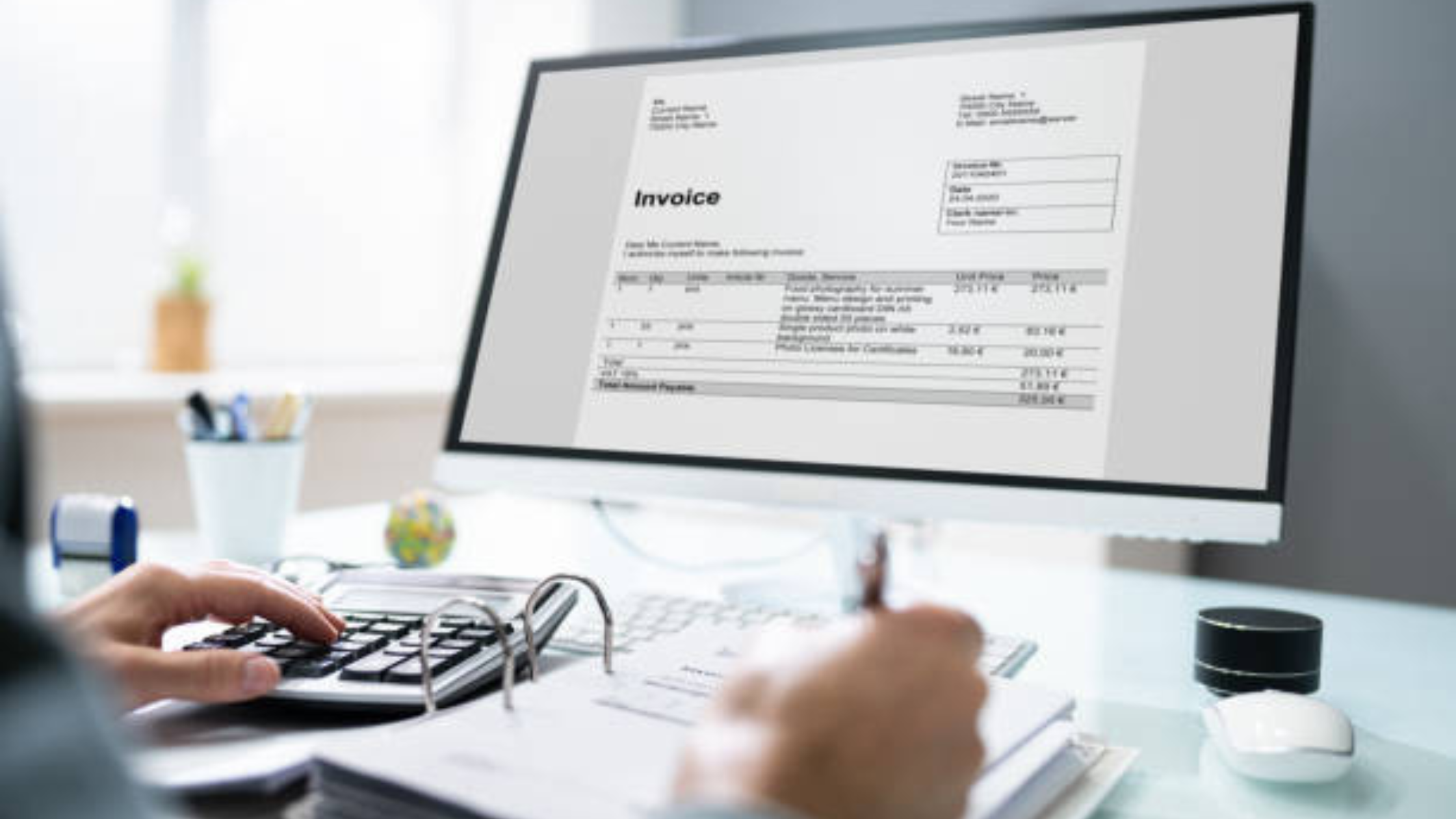Send Receipts via Email for Instant Documentation

Sending receipts via email for instant documentation is a convenient and efficient way to keep track of financial transactions. Where digital communication is key, email receipts offer a paperless solution that is both eco-friendly and easily accessible. By promptly delivering receipts to email addresses, businesses can ensure that customers have a record of their purchases at their fingertips. This not only enhances customer satisfaction but also provides a reliable method for individuals and organizations to organize their expenses. Moreover, email receipts can serve as valuable proof of transactions for accounting and reimbursement purposes. In this digital age, the ability to send receipts via email streamlines the documentation process, making it a practical choice for both businesses and consumers alike.
Benefits of Sending Receipts via Email
Accessibility and Convenience
Sending receipts via email provides customers with easy access to their purchase records anytime, anywhere. They can simply search their email inbox to find the receipt they need, eliminating the hassle of rummaging through physical papers. This convenience not only saves time but also ensures that important receipts are never lost or misplaced.
Organization and Storage
Email receipts promote better organization as customers can create folders or labels to categorize their digital receipts. This helps in efficient record-keeping and simplifies the process of finding specific receipts when required. Moreover, digital receipts are less prone to damage or fading compared to paper receipts, ensuring that the information remains intact for a longer period.
Environmental Impact
By opting for email receipts, businesses and customers contribute to environmental conservation by reducing paper usage. This eco-friendly approach helps in minimizing the carbon footprint and plays a part in sustainable business practices. Additionally, sending receipts electronically reduces the need for physical transportation, further decreasing the overall environmental impact.
Cost-Effectiveness
Another significant benefit of sending receipts via email is the cost-effectiveness it offers to both businesses and customers. Businesses save on printing and postage costs associated with traditional paper receipts, while customers can easily store and access their receipts without the need for physical storage solutions. This cost-saving aspect benefits all parties involved and contributes to overall efficiency in financial transactions.
Enhanced Security
Email receipts provide an added layer of security to sensitive transaction information. With email encryption and secure server storage, the risk of unauthorized access to receipts is significantly reduced. Customers can also maintain their privacy by keeping their digital receipts protected within their email accounts, enhancing the overall security of their purchase history.
Personalization and Marketing Opportunities
Sending receipts via email opens up avenues for businesses to personalize their communications with customers. By including tailored promotions, product recommendations, or survey requests within the email receipt, businesses can enhance customer engagement and build brand loyalty. This direct marketing approach not only benefits the business but also provides added value to the customer's shopping experience.
The benefits of sending receipts via email extend beyond mere convenience and organization. From environmental conservation to cost-effectiveness and enhanced security, email receipts offer a sustainable and efficient alternative to traditional paper receipts. Embracing this digital approach not only streamlines transaction processes but also fosters a more personalized and secure relationship between businesses and customers.
Steps to Send Receipts via Email
Step 1: Scan or Take a Picture of the Receipt
Sending receipts via email is a modern and efficient way to manage transaction records. To begin the process, the first step is to scan the physical receipt using a scanner or simply take a picture of it with your smartphone. Ensure that the image captured is clear and all details on the receipt are easily readable. This step is crucial as it sets the foundation for a well-documented transaction history.
Step 2: Compose an Email
After obtaining the digital copy of the receipt, proceed to your email client and create a new email. In the email body, provide relevant details related to the receipt, such as the transaction date, items purchased, and any other pertinent information. Consider including a subject line that clearly indicates the purpose of the email, making it easier for the recipient to identify and categorize the receipt.
Step 3: Attach the Receipt Image
Navigate to the attachment option in your email client and select the scanned or photographed receipt image to attach it to the email. It's advisable to optimize the image size before attaching it to ensure smooth sending and receiving. Compression tools can help reduce the file size without compromising image quality, facilitating a seamless transfer process.
Step 4: Add Recipient and Send
In the 'To' field, enter the recipient's email address to direct the email appropriately. Consider adding any additional recipients in the 'Cc' or 'Bcc' fields if necessary. Along with the attached receipt, you can include a personalized message expressing gratitude or providing context for the transaction. Before hitting the send button, review the email for accuracy, ensuring all details are correct.
By following these steps, you not only streamline the receipt-sharing process but also contribute to environmental sustainability by reducing paper usage. Sending receipts via email promotes organization and accessibility, enabling easy retrieval whenever needed. Embrace the digital era by incorporating email as a tool for efficient record-keeping and communication in your financial transactions.
Email as a Documentation Tool
Email has long been a staple in communication, but its role extends beyond simple messaging. As a documentation tool, email offers a plethora of features and capabilities that can revolutionize how teams collaborate, share information, and maintain records.
Features and Capabilities of Email as a Documentation Tool:
Real-time Communication: One of the key strengths of email is its ability to facilitate quick and real-time communication. Whether it's sharing project updates, discussing key decisions, or providing feedback, email allows team members to document their interactions instantly.
File Attachments: In addition to text-based communication, email supports file attachments, enabling users to include relevant documents, images, spreadsheets, and more as part of the documentation process. This feature enhances the comprehensiveness of documentation and ensures all necessary files are readily accessible.
Search Functionality: Most email platforms come equipped with robust search functionality, making it effortless to locate specific information within email threads or conversations. This feature simplifies information retrieval and enhances the overall efficiency of documentation processes.
Organization Tools: Emails can be organized using folders, labels, or tags, allowing users to categorize and structure their documentation systematically. By employing organizational tools, individuals can easily access archived emails, track progress, and maintain a well-structured documentation system.
Security Measures: Email services prioritize data security and often provide encryption and authentication protocols to safeguard sensitive information shared through documentation. These security measures ensure the confidentiality and integrity of documents exchanged via email.
Integration with Other Tools:
Calendar Integration: Many email platforms seamlessly integrate with calendar tools, enabling users to schedule meetings, set reminders, and manage important dates directly from their email interface. This integration enhances productivity and ensures that documentation aligns with scheduled events.
Task Management Integration: Some email services offer integration with task management tools, allowing users to create tasks from emails, set deadlines, and monitor task progress within a unified platform. This integration streamlines workflow management and enhances task documentation.
Collaboration Tools Integration: Email can be seamlessly integrated with popular collaboration tools such as Google Workspace or Microsoft 365, facilitating real-time document sharing, editing, and collaboration within the email environment. This integration promotes team collaboration and simplifies document version control.
Automation Capabilities: Automation tools can be harnessed to automate various email documentation processes, such as automatically saving email attachments to cloud storage, generating tasks from specific keywords, or triggering notifications for important emails. Automation streamlines documentation workflows and minimizes manual intervention.
Version Control: Email systems can serve as effective version control tools by tracking changes made to documents sent via email. By maintaining a history of document edits and revisions, email documentation ensures version integrity and facilitates document auditing.
Audit Trails: Many email platforms offer audit trail features that track document access, changes, and interactions, providing a transparent record of document history. Audit trails enhance accountability, traceability, and compliance in the documentation process.
Email stands as a versatile and powerful documentation tool that transcends traditional messaging. With its rich features, seamless integrations, and automation capabilities, email streamlines documentation processes, fosters collaboration, and enhances information management within teams and projects. Embracing email as a documentation tool empowers organizations to optimize communication, streamline workflows, and maintain comprehensive records effectively.
Security and Privacy Considerations
Encryption and Secure Sending
Ensuring that your confidential information remains secure is paramount. Encryption is a key aspect of cybersecurity that involves converting data into a code to prevent unauthorized access. This process secures sensitive information by making it unreadable to anyone without the proper decryption key. Secure sending of data is crucial in protecting information during transmission. Implementing encryption protocols like SSL/TLS establishes a secure connection between a user's device and a website, ensuring that data shared between the two points remains confidential and integral. Encryption and secure sending are vital components in safeguarding data both at rest and in transit, reducing the risk of data breaches and unauthorized access.
Privacy Settings
Online privacy is a major concern in today's interconnected world. Privacy settings on various platforms and devices give users control over their personal information. By managing these settings effectively, individuals can regulate who can view their data and how it is shared. Regularly reviewing and adjusting privacy settings is essential to adapt to changing online threats and ensure continued protection of personal information. Understanding the privacy features provided by different services and devices empowers users to make informed decisions about their online presence. By customizing privacy settings to align with individual preferences, users can enhance their online security and mitigate the risk of privacy violations and identity theft.
Importance of Multi-Factor Authentication
Adding an extra layer of security beyond passwords, multi-factor authentication (MFA) is becoming increasingly necessary in today's cybersecurity landscape. MFA requires users to provide two or more verification factors to access an account, such as a password, a fingerprint, or a one-time code sent to a mobile device. This significantly reduces the risk of unauthorized access even if passwords are compromised. Implementing MFA across various online accounts adds a robust defense against cyber threats and enhances overall security.
Data Minimization and Consent
Data minimization is a privacy principle that advocates for collecting only the necessary data required for a specific purpose. By limiting the collection and retention of personal information, organizations can reduce the risk of data breaches and unauthorized access. Moreover, obtaining user consent before collecting and processing personal data is essential in maintaining transparency and trust. Users should be informed about what data is being collected, how it will be used, and have the option to consent or opt-out. Respecting user consent and practicing data minimization are key steps in promoting privacy and building a trustworthy relationship with users.
Security Awareness Training
Educating individuals about cybersecurity best practices through security awareness training is crucial in enhancing overall security posture. By raising awareness about common cyber threats, social engineering tactics, and safe online practices, organizations and individuals can better protect themselves against malicious activities. Security awareness training helps users recognize potential risks, identify phishing attempts, and understand the importance of secure behaviors. Regular training sessions and updates ensure that individuals remain informed about evolving security threats and equipped to respond effectively.
Incident Response Planning
Despite preventive measures, security incidents can still occur. Having a well-defined incident response plan is essential for efficiently mitigating the impact of security breaches. An incident response plan outlines the steps to be taken in the event of a security breach, including identifying the breach, containing the damage, investigating the cause, and implementing corrective actions. By preparing and practicing incident response procedures, organizations can minimize downtime, reduce financial losses, and maintain customer trust. Proactive incident response planning is a critical component of effective cybersecurity management.
Prioritizing security and privacy considerations in today's digital landscape is imperative to safeguard personal and sensitive information. By implementing robust encryption practices, managing privacy settings effectively, adopting multi-factor authentication, practicing data minimization and consent, providing security awareness training, and developing comprehensive incident response plans, individuals and organizations can fortify their defenses against cyber threats and protect themselves from potential harm.
Conclusion
Sending receipts via email for instant documentation is a convenient and efficient way to keep track of expenses and transactions. It provides a digital record that is easily accessible and can help in organizing financial information. By utilizing email for sending receipts, individuals and businesses can save time, reduce paper clutter, and ensure that important documents are securely stored. This modern approach to documentation offers a practical solution for staying organized in today's fast-paced world.







